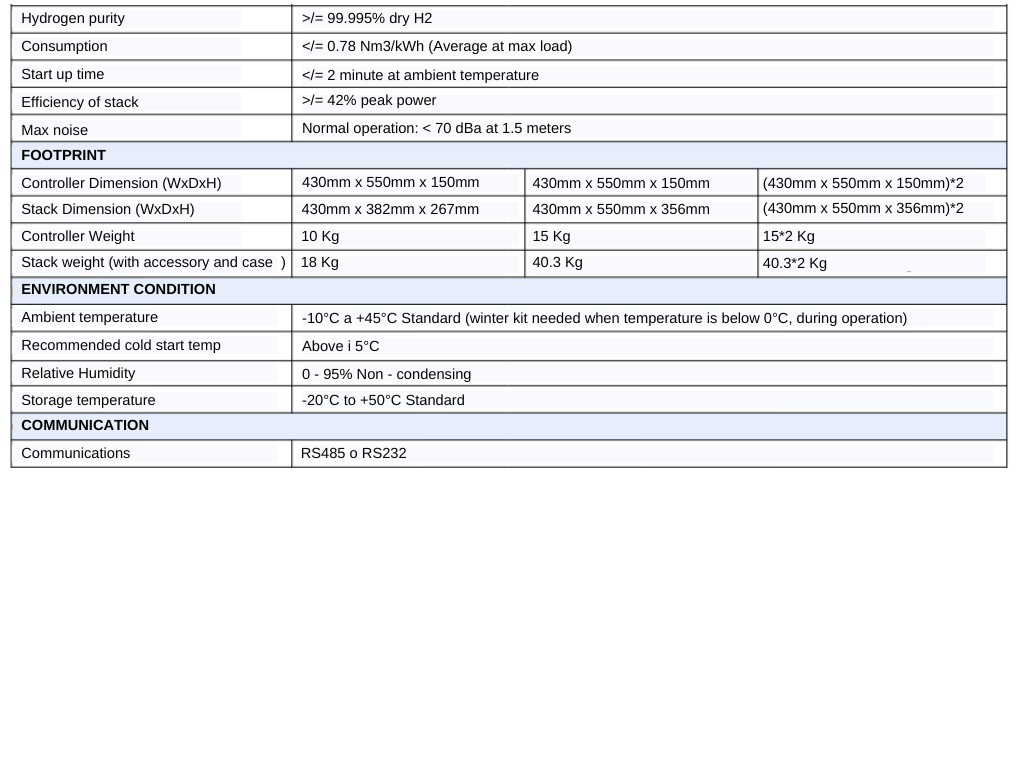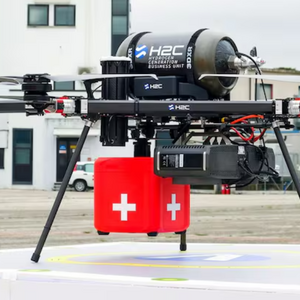.
FEATURES
The only inputs for the fuel cell are grade 3.5 industrial hydrogen (concentration of H2 99.995%) and oxygen (air), with the only by-products being pure water/steam and heat. As a result, fuel cells are considered a real GREEN TECHNOLOGY.
Let's recap the main features:
- Cost savings compared to diesel, even by reducing carbon production
- Remotely accessible for real-time control and monitoring
- Anti-theft solution (the fuel source has no resale value)
- Optional lockers for extended stroke/auxiliary fuel tank
- Silent operation, clean energy
- Lower energy costs, less maintenance
- No emission of carbon monoxide, NOx or SOx
- Can be 'hybridised' with solar or wind energy
- Basic 48VDC battery charger configuration
- Configuration of direct power supply to direct current loads, with supercapacitor accessories for load damping
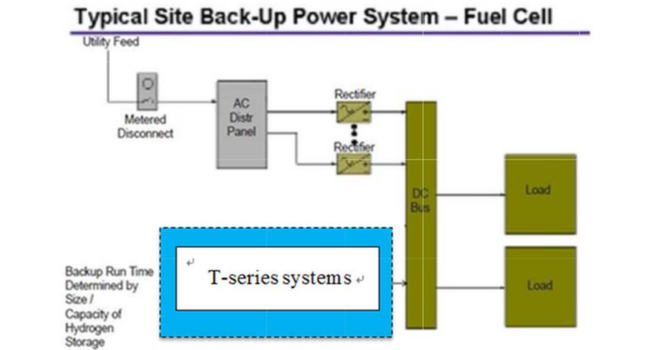
PEM TECHNOLOGY
Although many fuel cell technologies are available, the most common and practical are proton exchange membrane technologies, also called PEM.
One of the attributes that makes a fuel cell 'attractive' for use in many applications is that it can produce ideal DC current for hybrid, applications with solar (photovoltaic), wind and battery systems.
The fuel cell is similar to a generator, as it's sized precisely for the power requirement and can operate indefinitely provided it has a fuel source. This means that when coupled with a suitably sized storage solution, it can work effectively for long standby times as a standby power source for various applications.
The T-Series system is designed to be a backup power supply solution for applications within transportation, security, wired and wireless telecommunications, public and government services, and many other industries.
The T-series system is certainly destined to increase traditional power system.
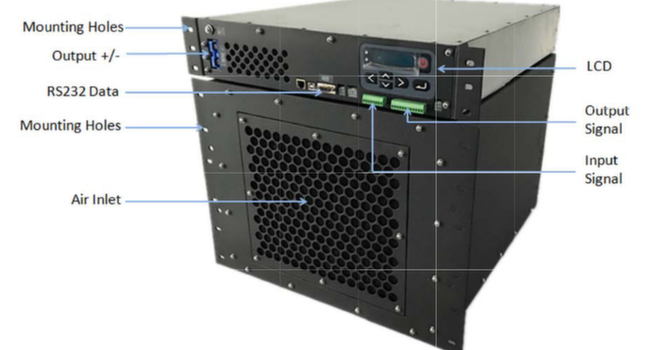
MODELS AVAILABLE
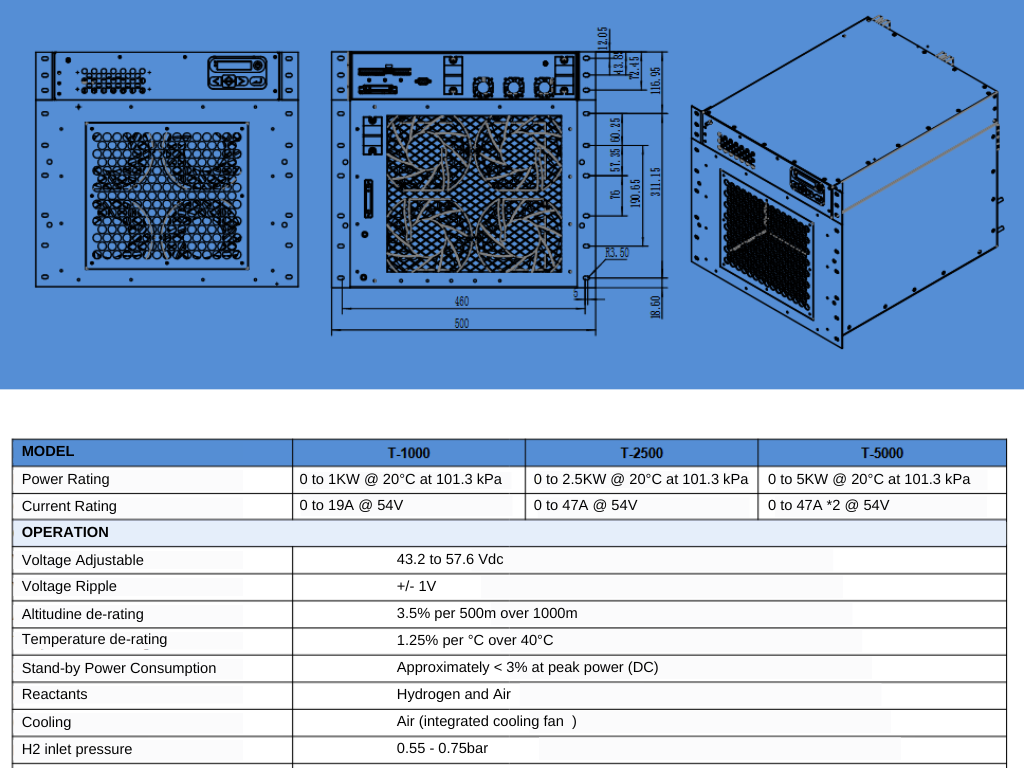
TECHNICAL DATA
